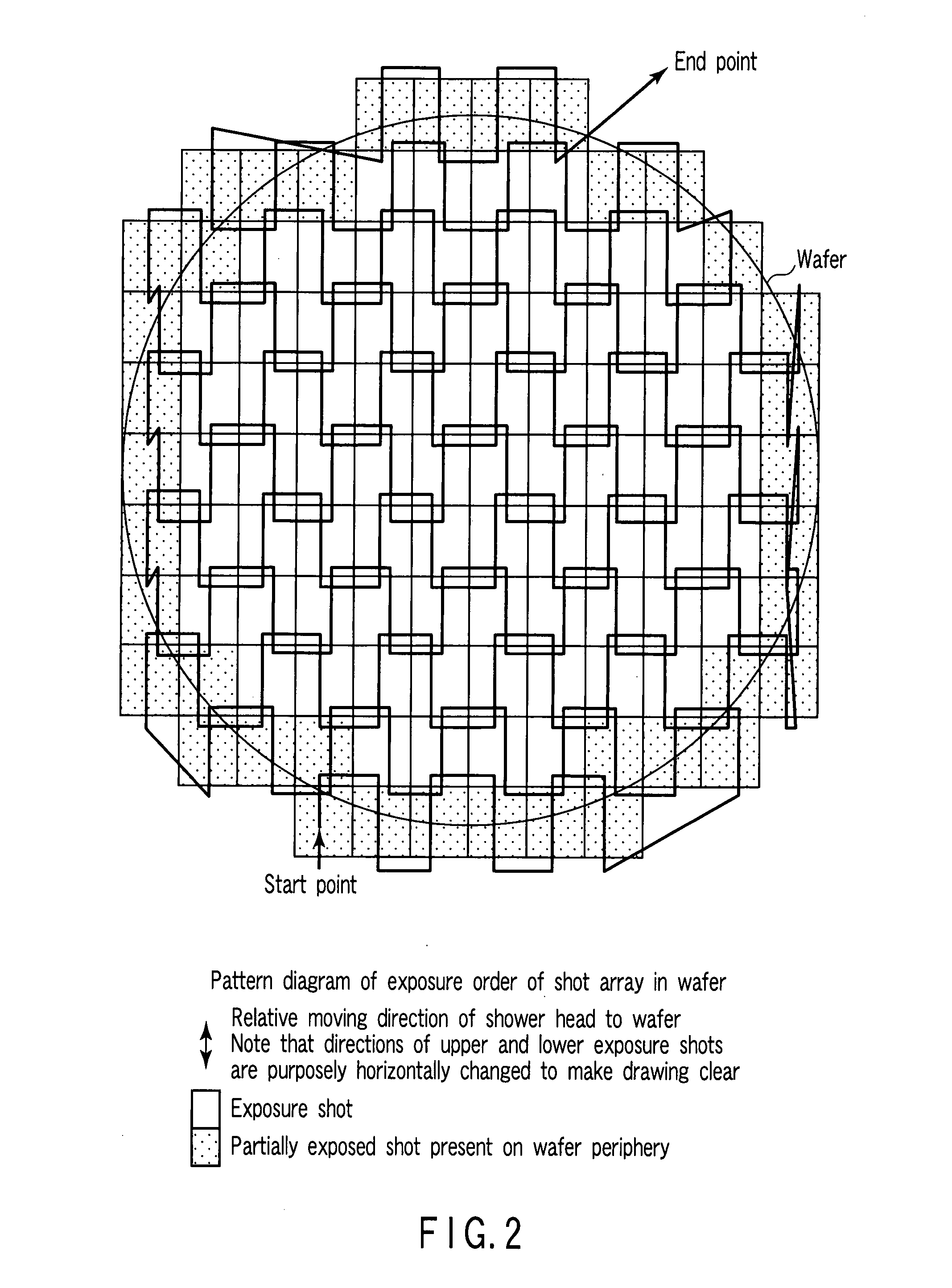Method of manufacturing semiconductor device and liquid immersion lithography system
a technology of liquid immersion lithography and semiconductor devices, which is applied in the direction of photomechanical treatment, printing, instruments, etc., can solve the problem of film being peeled
- Summary
- Abstract
- Description
- Claims
- Application Information
AI Technical Summary
Benefits of technology
Problems solved by technology
Method used
Image
Examples
first embodiment
[0073] An outline of a lithography system including an inspection step for adhesion of particles generated by film peeling on an edge face of a wafer by relative movement of liquid immersion fluid or film peeling caused by a wafer exposed in advance in the liquid immersion lithography apparatus described in Reference 1 and 2, and a coping process performed when the film peeling occurs will be described below.
[0074] A flow chart of the embodiment is shown in FIG. 9. A “coating” step in the flow chart includes all the processes performed until a wafer is given to the liquid immersion lithography apparatus in the coating and developing apparatus. A “developing” step includes all processes in the coating and developing apparatus after the pattern exposure step performed by the liquid immersion lithography apparatus.
[0075] After the pattern exposure process performed by the liquid immersion lithography apparatus, predetermined inspection is performed to detect film peeling, and adhesiv...
second embodiment
[0093] As a method of inspecting an wafer edge, a detecting mechanism which is the same as the wafer edge face inspection apparatus or a detecting mechanism incorporated in a bevel polishing apparatus can be used. More specifically, the method is constituted by: a detecting mechanism constituted by an optical system including a lens, an optical filter as needed, and an image detecting unit such as a CCD, a storing device, and an image processing device; and a mechanism which moves either one of or both of a wafer edge used to inspect an interested position on the outer periphery of the wafer, and the detecting mechanism.
[0094] By relative movement between liquid immersion fluid and a wafer in liquid immersion lithography, on an upper surface side of the wafer which may be in contact with the liquid immersion fluid and on a side surface of the wafer on which a flow of liquid immersion fluid is supposed to be disturbed to some extent, film peeling at an edge of the wafer may occur.
[...
third embodiment
[0099] An example obtained by improving the method of inspecting a wafer edge in the second embodiment will be described below.
[0100] In the second embodiment, in order to detect film peeling or adhesion of particles at an edge of a wafer, before and after the pattern exposure step performed by the liquid immersion lithography apparatus, the edge of the wafer is inspected, and the film peeling or the adhesion of particles is detected on the basis of both pieces of inspection information.
[0101] As described in the second embodiment, when detection is performed only after the liquid immersion pattern exposure step, ununiformity of a film composition which is present at the edge of the wafer before the liquid immersion pattern exposure step without causing film peeling in the liquid immersion pattern exposure step or adhesion of particle may be detected. In order to prevent such false detection, a method of inspecting the edge of the wafer before and after the liquid immersion patter...
PUM
 Login to View More
Login to View More Abstract
Description
Claims
Application Information
 Login to View More
Login to View More - R&D
- Intellectual Property
- Life Sciences
- Materials
- Tech Scout
- Unparalleled Data Quality
- Higher Quality Content
- 60% Fewer Hallucinations
Browse by: Latest US Patents, China's latest patents, Technical Efficacy Thesaurus, Application Domain, Technology Topic, Popular Technical Reports.
© 2025 PatSnap. All rights reserved.Legal|Privacy policy|Modern Slavery Act Transparency Statement|Sitemap|About US| Contact US: help@patsnap.com



